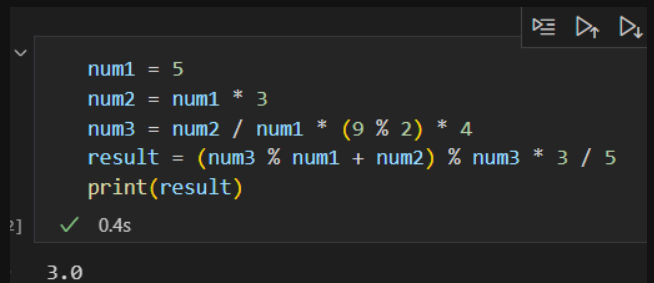Lesson Notes 3.3 and 3.4
Lesson Notes
1.3 and 1.4
-
Algorithms are basically sequences of code
-
An iteration is a loop that does something over and over until the certain condition is met
-
There are also symbols used to calculate math operations. (*) for multiplication, (/) is for division.
-
An algorithm is a finite set of instructions that accomplish a task
-
Three are three parts of an algorithm; sequencing, selection, and iteration
-
Selection allows the algorithm to make decisions based on whether the condition is met
-
the function len(str) means that it will return the number of letters, or characters in that string. The len stands for length.
-
a substring gives the length of the entire string. That is the output
-
the concat funtion is having two strings and addding them together to make one string, or word.
-
A sequence is code in order of events

This is an example of using math expressions. I don't really understand the % symbol, mostly because I don't really know what MOD meant. I think it means remainder. So for this one I have to figuree out what num2 equals and num3 before I proceed to solving for the result. The answer is three.

